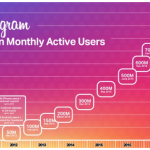Video Length: 00:10:03
The US Dollar continues to take its cues from the other major currencies as light calendars on Wednesday and Thursday have ceded the spotlight to developments in the Asia-Pacific region and Europe. While the DXY Index is trading lower still on Thursday after giving up all of its early gains on Wednesday, the greenback is not the focal point for much of the movement in FX markets thus far today.
The commodity currencies were all trading higher earlier following the release of Q3’17 Chinese GDP data, which showed stronger growth than economists were expecting, and thus, implying demand for base metals and energy commodities will stay supported in the near-term. With the Australian jobs report for September marginally beating expectations, AUD/USD has been able to grind higher away from its October low (which appears to be established).
Even as the Canadian Dollar enjoyed the tailwinds, the New Zealand Dollar did not; NZD/USD cratered as it was made clear that Labour leader Jacinda Ardern would become the next New Zealand Prime Minister. Concerns about the scope of her proposed economic reforms have investors trading skeptically amidst the news.
Elsewhere GBP/USD is dropping after retail sales data showed a slump in consumption in September. The UK economy, much like the US economy, sees nearly 70% of its headline GDP figure come from consumption. The combination of a weak British Pound, low wage growth, and high inflation is eating into British consumers’ purchasing power more and more.
The eroding purchasing power issue is one that the Bank of England seemed set to tackle next month with a rate hike (OIS pricing in a 71% chance). However, the BOE may be cornered in a mini-stagflationary policy conundrum: if it raises rates, fragile growth conditions will crack; if keeps rates near zero, inflation will run away. Pound weakness today reflects the uneasy path ahead (not withstanding any positive surprises in the Brexit saga).











Leave A Comment